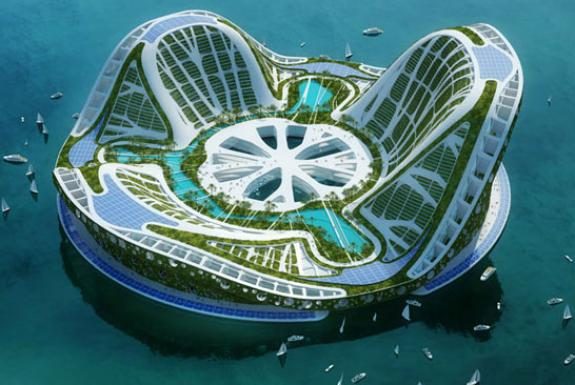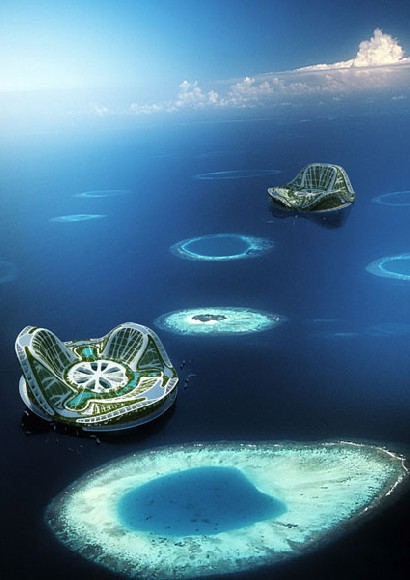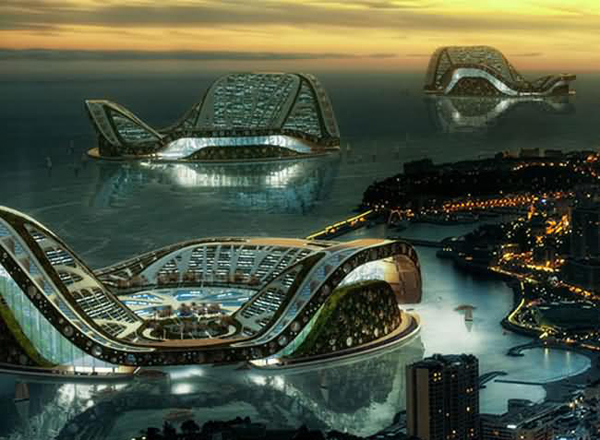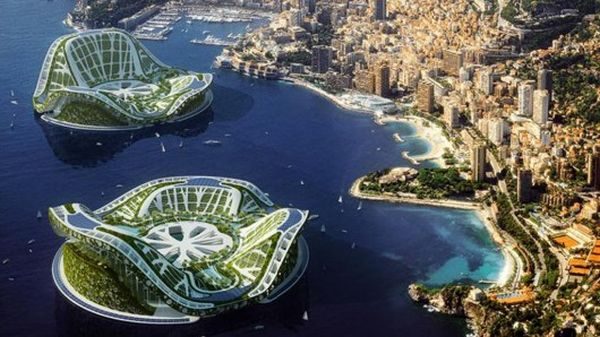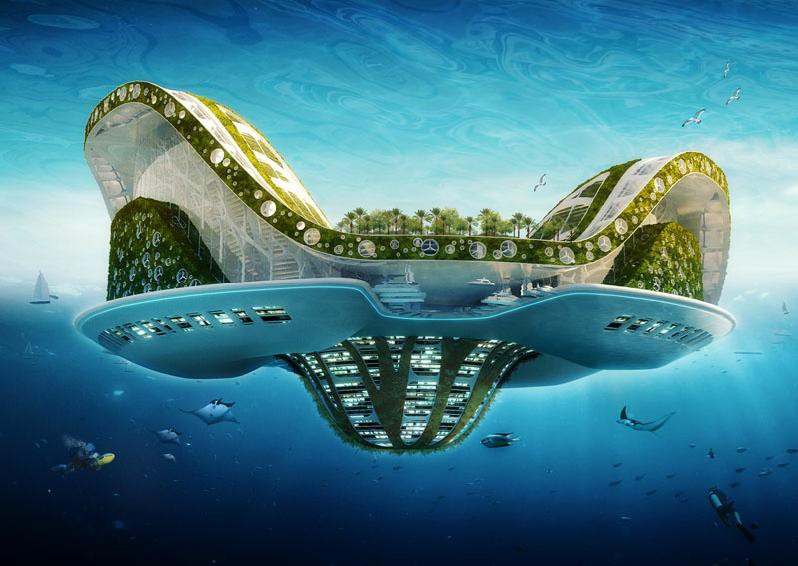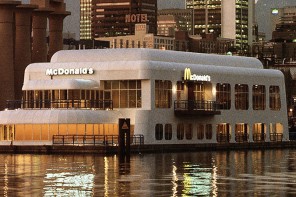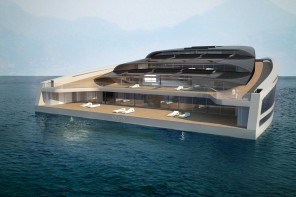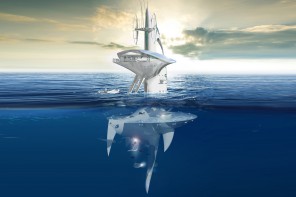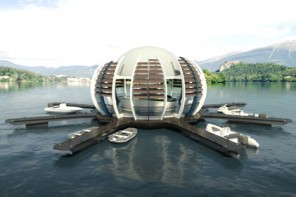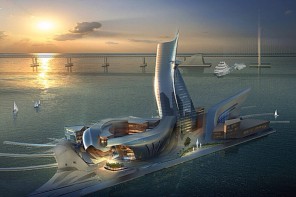Floating Lilypad City
Floating Lilypad City is a very beautiful concept by Vincent Callebaut Architects for when the Ice from continental glaciers and the ice caps of Antarctic and greenland cause the sea level to rise in such a manner that we need to find or build refuges on the sea
At first glance, they look like a something out of a starters movie or as a couple of giant inflatable garden chairs that have washed out to sea
But they are according to the designer, the ultimate solution to rapidly rising sea levels.
This computer-generated image shows two floating cities, each with enough room for 50,000 inhabitants.
The ‘floating Lilypad city’ would be powered by renewable energy sources
Based on the design of a lilypad, they could be used as a permanent refuge for those whose homes have been covered in water. Major cities including London, New York and Tokyo are seen as being at huge risk from oceans which could rise by as much as 3ft by the end of this century.
This solution, by the award-winning Belgian architect Vincent Callebaut, is designed to be a new place to live for those whose homelands have been wiped out.
The ‘Floating Lilypad City’ would float around the world as an independent and fully self-sustainable home. With a lake at its centre to collect and purify rainwater, it would be accessed by three separate marinas and feature artificial mountains to offer the inhabitants a change of scenery from the seascape.
Power for the central accommodation hub is provided through a series of renewable energy sources including solar panels on the mountain sides, wind turbines and a power station to harness the energy of the waves.
Mr Callebaut said: ‘The design of the city is inspired by the shape of the great Amazonia Victoria Regia lilypad. Some countries spend billions of pounds working on making their beaches and dams bigger and stronger.
‘But the floating lilypad city project is actually a long-term solution to the problem of the water rising.’
The architect, who has yet to estimate a cost for his design, added: ‘It’s an amphibious city without any roads or any cars. The whole city is covered by plants housed in suspended gardens.
‘The goal is to create a harmonious coexistence of humans and nature.’
‘Some countries spend billions of pounds working on making their beaches and dams bigger and stronger.
‘But the floating Lilypad city project is actually a long term solution to the problem of the water rising.
‘And it has the other objective of providing housing for refugees from islands that have been submerged.’
The floating Lilypad city would house climate change refugees
Centred around a lake which collects and then purifies rain water, the Lilypad will drift around the world following the ocean currents and streams. Or be stationary around big metropolitan areas to enhance the amount of livable surface area.
It will be accessed by three marinas and will also feature three ‘mountains’ to offer the inhabitants a change of scenery.
Power will be provided through a series of renewable energy sources including solar, thermal, wind energy, hydraulic and a tidal power station.
The city will actually produce much more energy than it consumes and be entirely ‘zero-emission’ as all the carbon-dioxide and the waste will be recycled.
Mr Callebaut added: ‘It’s an amphibious city without any roads or any cars.
‘The whole city is covered by plants housed in suspended gardens. The goal is to create a harmonious coexistence of humans and nature.
‘I think trying to accomodate the millions of people left homeless by environmental changes will prove to be one of the great challenges of the 21st century.’
Neither the cost of building the city or the cost of living there have been revealed.
According to the Intergovernmental Panel on Climate Change (IPCC), the global sea level is expected to rise between nine and 88 centimetres by 2100, with a ‘best estimate’ of 50 centimetres.
This is due to global warming which is causing the ice caps to melt.
In many places, 50 centimetres would see entire beaches being washed away, together with a significant chunk of the coastline.
On low-lying Pacific islands such as Tuvalu, Kiribati or the Maldives, the highest point is only two or three metres above current sea levels.
If the sea level was to rise by 50cm, significant portions of these islands would be washed away by erosion or covered by water.
Even if they remain above the sea, many island nations will have their supplies of drinking water reduced because sea water will invade their freshwater stocks.
There are also tens of millions of people living in low-level coastal areas of southern Asia, such as the coastlines of Pakistan, India, Sri Lanka, Bangladesh and Burma, who would be in danger.

